
Discover what to see in the night sky in October 2020 including a selection of planets, and two meteor showers
Details given are for London and may vary for other parts of the UK
Top 3 things to see in the night sky in October:
- Throughout the month - Spot the planets Mars, Jupiter, Saturn and Uranus.
- 13 Oct - Mars reaches opposition and will be at its brightest.
- 21/22 Oct - It's the peak of the Orionids meteor shower.
Look Up! Podcast
Subscribe and listen to the Royal Observatory Greenwich's podcast - Look Up! As well as taking you through what to see in the night sky each month, Royal Observatory Greenwich astronomers pick a topic to talk about. For October, they're talking about the discovery of phosphine in the clouds on Venus and interviewed one of the astronomers behind the discovery, Dr Emily Drabek-Maunder. Have a listen below, then cast your vote on our Twitter poll (@ROGAstronomers) during the first week of the month.
Royal Observatory Greenwich · Look Up! October 2020
Our podcast is available on iTunes and SoundCloud
Astronomy in October 2020: key events and what to see
1 October, 31 October: The Moon
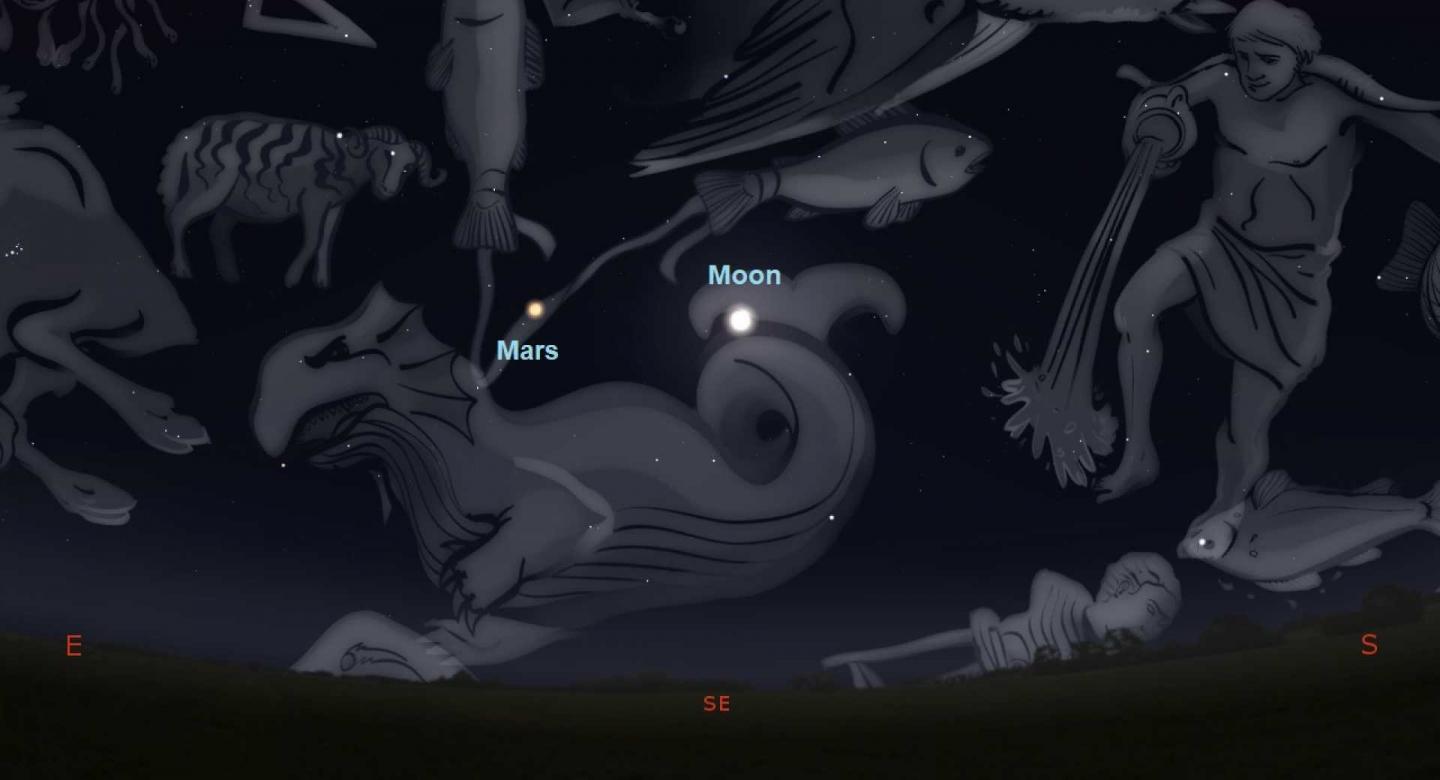
October begins with a full moon and ends with one too. When two full moons occur in a single calendar month, the second full moon is often referred to as a blue moon, but this is just one definition of what a blue moon is. Traditionally, the definition of a blue moon is that it is the third full moon in an astronomical season containing four full moons. This definition can be quite confusing for people using the conventional meteorological calendar because astronomical seasons begin and end at the equinoxes and solstices compared to meteorological seasons which always start at the beginning of a calendar month. So how rare are blue moons? The length of the lunar phase cycle is 29.53 days which is relatively close to the lengths of the months in our calendar, so most months will only have one full moon. However, on average once every 2.7 years, two full moons will occur in one calendar month.
8 October, 21/22 October: Meteor showers

For stargazers keen on spotting meteors, the month of October provides two great opportunities to do so. The night of the 8th October sees the peak of the Draconids meteor shower. Produced by debris from Comet 21P/Giacobini-Zimmer, the radiant of this meteor shower lies in the constellation of Draco. Although this meteor shower has a rate of around 10 meteors per hour, it has been known to produce more active displays in the past, with the most intense showers recorded in 1933 and 1946.
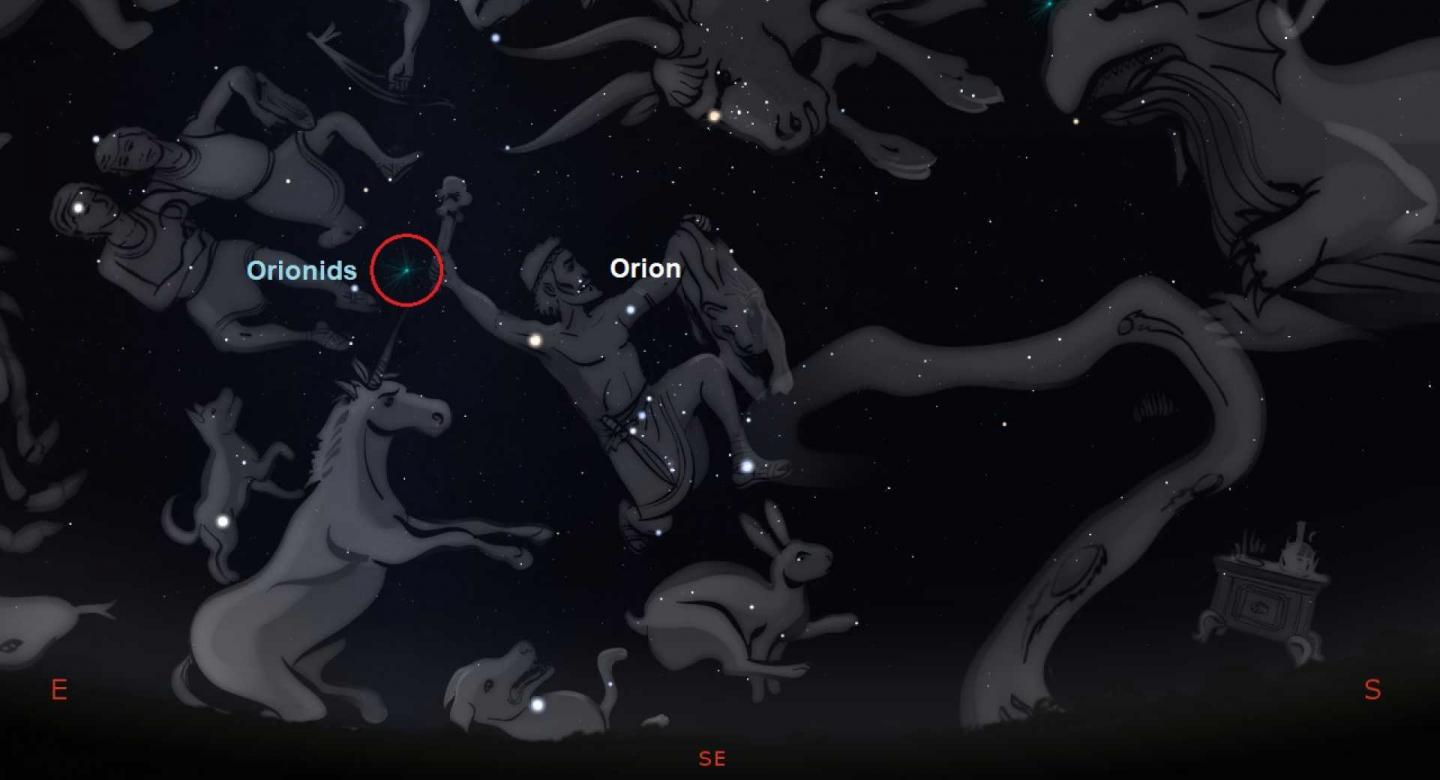
The Orionids meteor shower is one of the best known, and most reliable, meteor showers of the year and peaks on the night of 21/22 October. Wait for the constellation of Orion, the radiant of this shower, to rise high up in the southern sky to increase your chances of spotting some meteors. Debris from Halley’s comet is responsible for producing the Orionids meteor shower which has an estimated rate of up to 25 meteors per hour. Hunting for meteors is a waiting game, so bring along a comfy chair to sit on, wrap up warm and have a hot drink with you as you could be outside for a while. For your best chances of spotting some meteors from both showers, find a wide, open space far from street lights and other light pollution. Once your eyes have adapted to the dark, face the direction of the radiant of the shower and scan the skies around the radiant point. Meteors can be seen with the naked eye, so there’s no need for binoculars or a telescope.
13 October: Mars reaches opposition
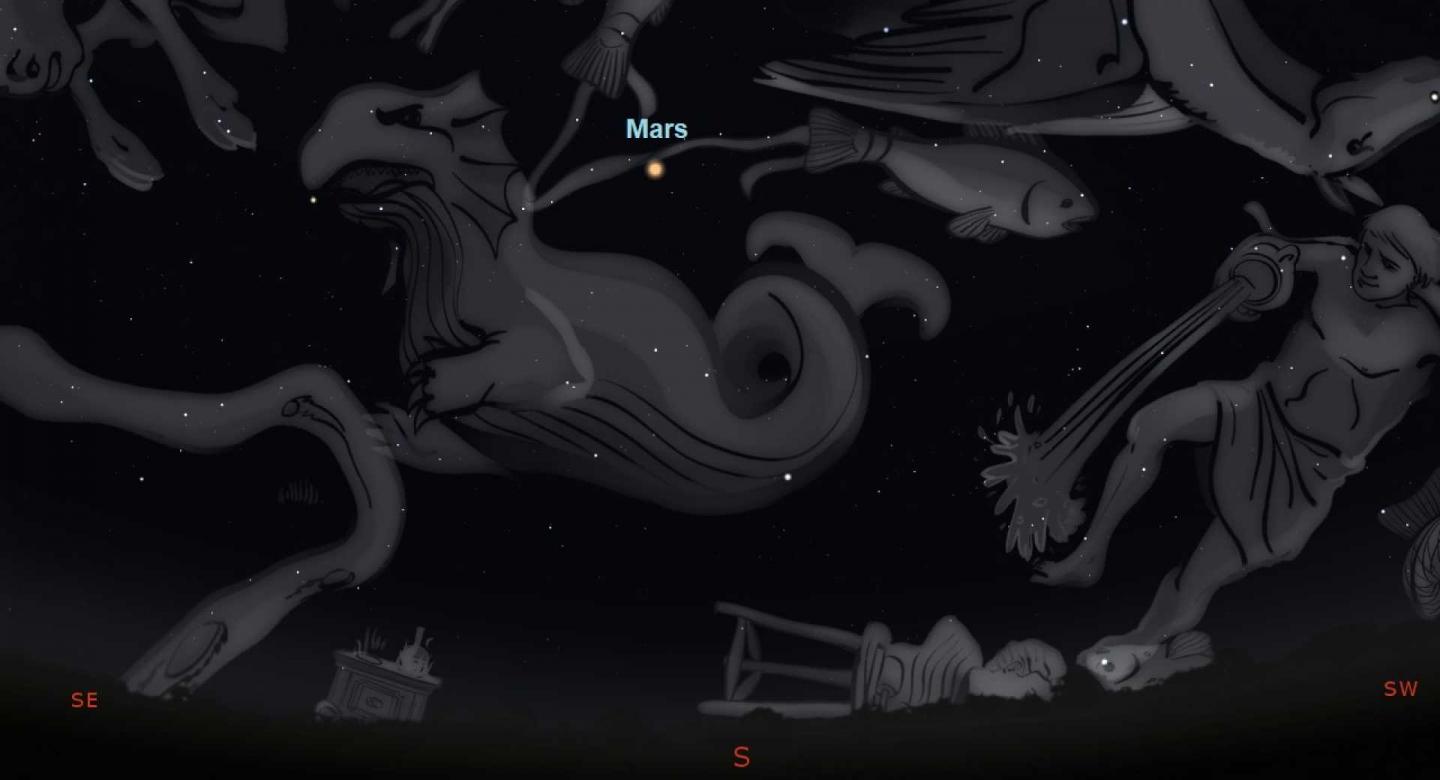
Enjoy a planetary trio this month with Jupiter, Saturn and Mars all shining brightly in the night sky. Mars reaches opposition on 13th October which means that it will be at its closest to the Earth. The planet will also be at its brightest and, thanks to its distinctive red colour, the planet will be easy to spot. If you have a telescope, do point it at the red planet – you might be able to see some surface features, including a polar ice cap. We can use the red planet, as well as the brightest star in the constellation of Aries (called Hamal), to spot another planet up in the sky – the distant ice giant Uranus. Close to midnight, stand facing east then draw a line left across the sky from Mars and a line down from the brightest star in Aries. Look just below the point where these two lines intersect on the sky and you’ll find Uranus. If you’re up in the early hours of the morning, look towards the East and you’ll spot the planet Venus.
25 October: Clocks go back
Don’t forget that the clocks go back an hour on 25th October, so we revert back to GMT and this marks the end of British Summer Time.
The Moon's phases this month
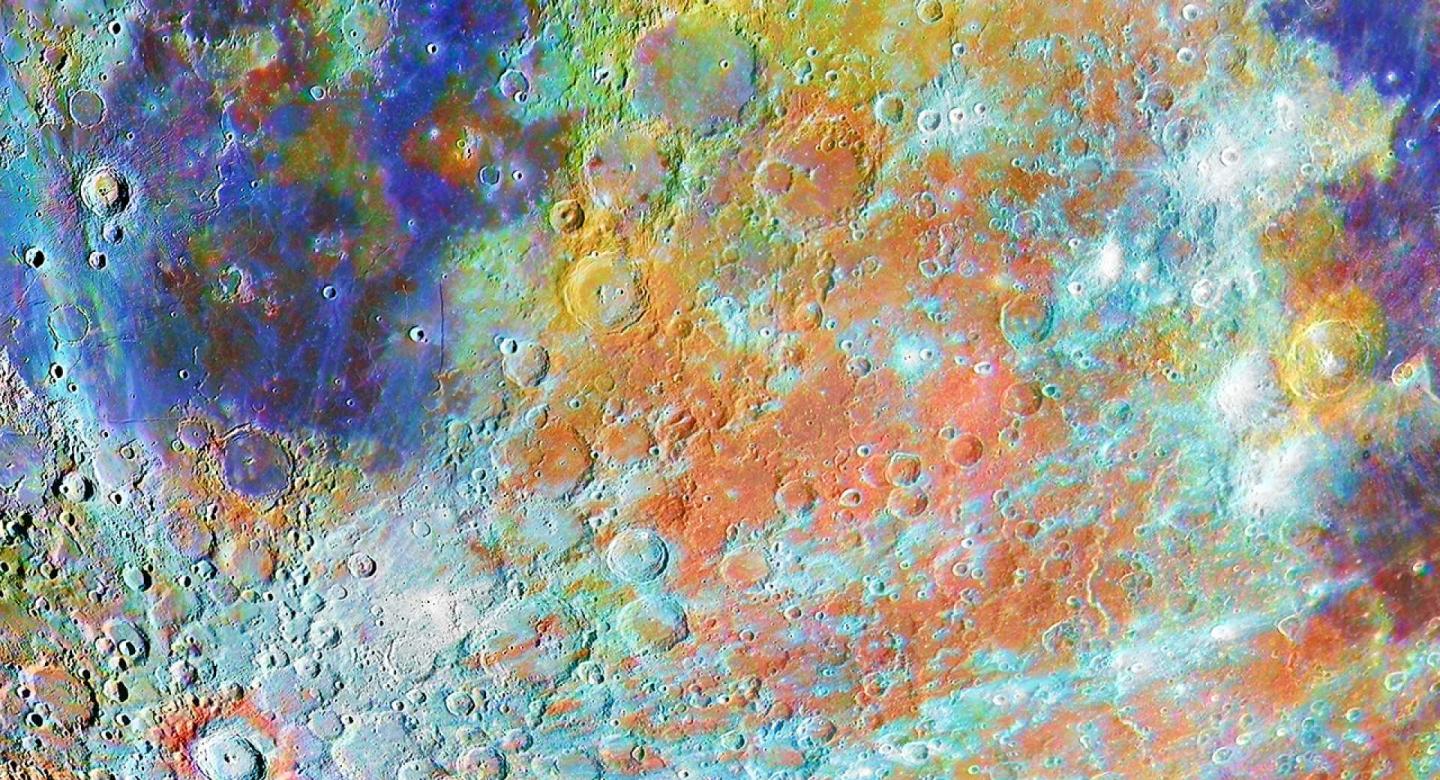
- 1 October: full moon (10:05pm)
- 10 October: last quarter moon (1:40am)
- 16 October: new moon (8:31pm)
- 23 October: first quarter moon (2:23pm)
- 31 October: full moon (2:49pm)
Stargazing Tips
- When looking at faint objects such as stars, nebulae, the Milky Way and other galaxies it is important to allow your eyes to adapt to the dark – so that you can achieve better night vision.
- Allow 15 minutes for your eyes to become sensitive in the dark and remember not to look at your mobile phone or any other bright device when stargazing.
- If you're using a star app on your phone, switch on the red night vision mode.
- Need a stargazing telescope or binoculars? Check out our range of high quality observing equipment recommended by Royal Observatory Greenwich astronomers.
See our range of observing equipment
Share your astronomy pictures
Congratulations to Fakhri Al-Alami for the stunning image of the night sky. He shared his image on our astrophotography Facebook page and we chose it for October's banner image.
Would you like the chance to have your image of the night sky used for our banner image? If so, share your photos via our Royal Observatory Astrophotography Facebook group
You can also connect with us on Twitter: @ROGAstronomers
Subscribe to our brand new YouTube channel and join us on a journey through time and space as we explore our wonderful Universe.
Solar System Discovery - Online Planetarium Show
Join us for Solar System Discovery, a live online planetarium show presented by an astronomer from the Royal Observatory Greenwich. The Universe is a vast and intriguing place, and this show explores our own little corner of it: the Solar System. Starting from our home planet, the Earth, we’ll travel through our celestial neighbourhood, visiting objects like planets, moons and asteroids, and ending with a fly-out to view our galaxy, the Milky Way. For more information, click here.
Observatory Online
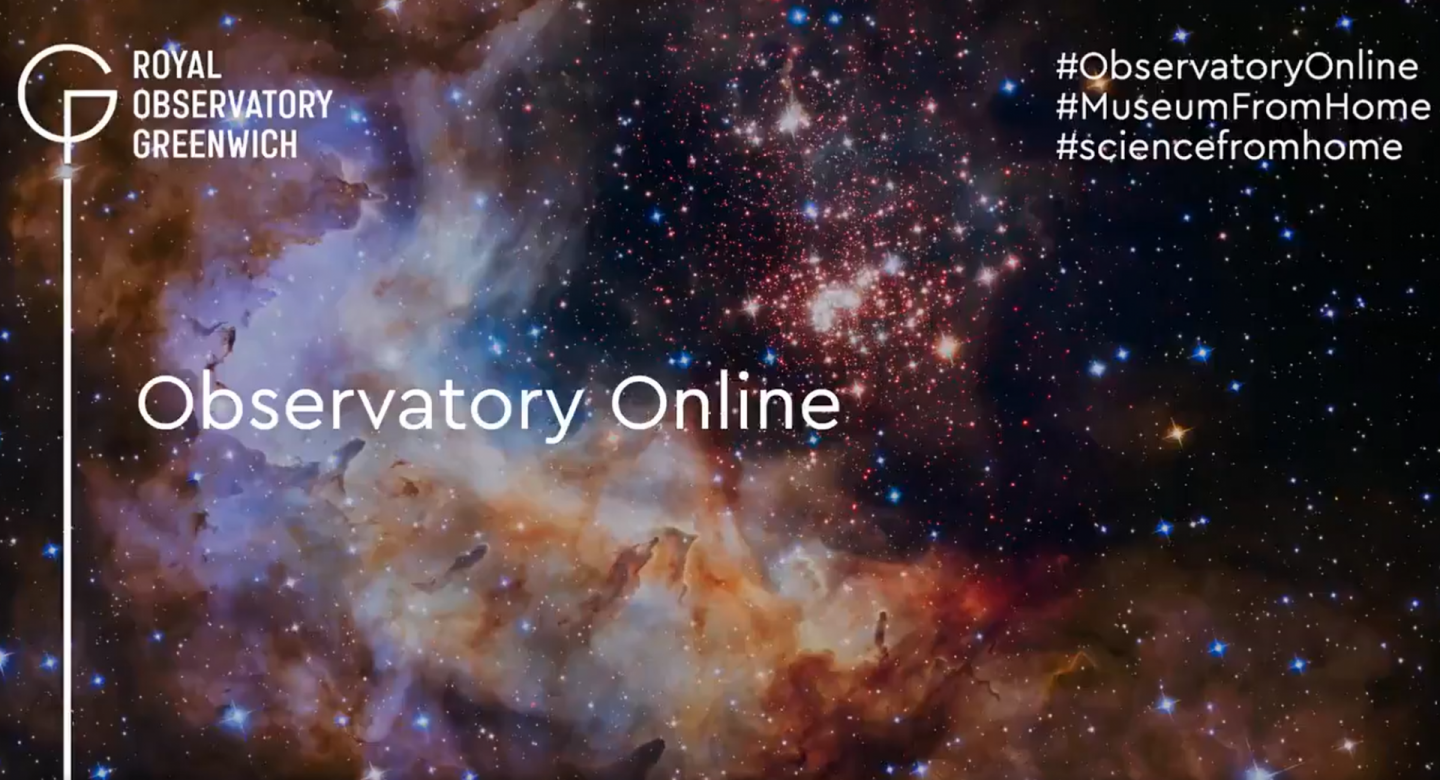
In our new Observatory Online sessions, we will answer your questions about Astronomy. Simply tweet your question to our twitter account, @ROGAstronomers, and we will do our best to answer them. Be sure to add #ObservatoryOnline, #Museumfromhome and #sciencefromhome to your tweet!
Ask an Astronomer
If you are a teacher with a class of curious students who all have space questions, never fear, we can help with that. Fill in our 'Ask the Astronomer' form with your student's questions and we will get back to you as soon as possible. We can also arrange video chats with teachers or groups of teachers to answer questions too. Just fill out the form and instead of adding children’s questions tell us you would like a video chat.
Resources for teachers and students
The Royal Observatory Greenwich's learning team has also created
- Free animated videos that answer the biggest questions in astronomy and free resources to go alongside them.
- A whole host of podcasts featuring interviews with real space scientists, astronauts and active researchers working in UK universities.
- A 'Learning at home' hub which contains a suite of resources for you to use at home and it even has an 'Ask the Astronomer' facility.


